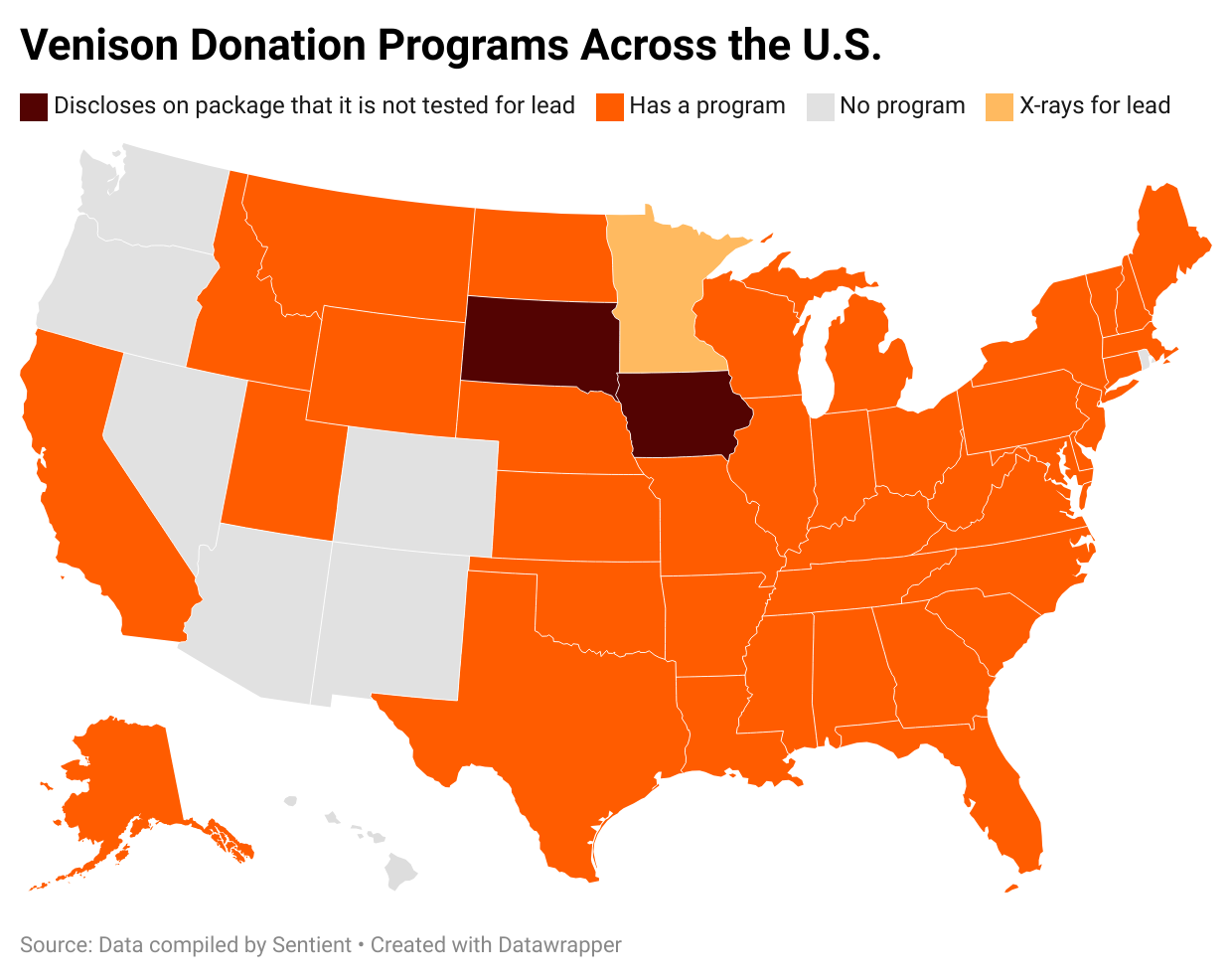Venison Donated to Food Banks May Contain Lead. The NRA Could Be Why.
“I am afraid that if we had tried to 'hide' what we had learned...then press found out, we would be butchered like a fat buck!”
Last summer, I received a tip from a friend telling me that Iowa has a program that serves potentially lead-laced meat to prisoners.
Six months later, I followed that lead, and the story had me sifting through hundreds of internal DNR documents, poking around NRA funding, and calling venison donation programs in all 50 states. Although Iowa no longer feeds hunter-shot venison to prisoners, the food bank donation program is alive and well. In fact, over 40 states have programs whereby hunters kill overpopulating deer, and that meat, often shot with lead ammo, is processed and sent to our most vulnerable community members.
Over twenty years ago, the Iowa Department of Natural Resources, the Food Bank of Iowa and the Department of Corrections forged a plan. The idea was simple: hunters would hunt overpopulating deer, and the public would receive processed venison through food banks and prisons. And it worked. In 2007, more than 8,000 deer were donated to the program, feeding tens of thousands of people in the process.
In 2008, however, the program hit a bit of a road bump. Officials in North Dakota “advised food pantries across the state not to distribute or use donated ground venison because of the discovery of contamination with lead fragments.” In response, the Iowa DNR sent participating venison processors a letter. They advised the processors to “periodically check grinders for lead fragments.” But they ultimately did not begin regularly inspecting the meat, nor did they end the program. In fact, in the letter, they noted “there is no evidence linking venison consumption to lead poisoning in humans.”
Some sources Sentient spoke with speculate the National Rifle Association might have something to do with this — the organization proudly boasts their donations to “Hunters for the Hungry” programs around the country and publicly denounces attempts to ban lead ammunition.
Almost two decades after the program began, Iowa venison may still contain lead, putting consumers — particularly the youngest — at risk.





My time as an active hunter stretches back better than 60 years, and in that time I've left my share of lead in the field. By college, I was aware of what ingested lead did to waterfowl, and when the mandate came down to switch to non-toxic in the 90s (I was in a career in wildlife management by that point), it was both welcome and past due. So, I carried shooting steel into my upland bird hunting as well, both on Federal lands that required it and State WMAs and private lands that did not. It was simply easier not to have to switch out shells and adjust shooting on one area vs the other. I have carried that into my deer hunting, too, where I have shot copper for many years. I am retired now, and we have a farm where we like to watch the eagles that often feed on the remains of deer that I have harvested (if I am lucky). I certainly don't want to cause collateral damage to them and other wildlife, as a byproduct of legally harvesting deer, ducks or pheasants.....even though I would likely never personally see the outcome for most of those non-target species that ingested lead.
Making the switch to non-toxics was easy for me, from a shooting perspective. And while costs were once significant, in recent years the difference in pricing between lead and non-toxics has been vastly diminished. It would simply take the will of the hunting public and the ammunition industry, and a period of gradual changeover for lead to be eliminated from most hunting. The projectiles are already there for most hunting situations. Could there be exceptions for some weapons that cannot handle non-toxic load velocities, etc.? I would think so. We certainly ought to start making that transition sooner rather than later. For hunters (who are an annually shrinking percentage of the human population), it is both the responsible thing to do (so, why aren't we doing it?) and, selfishly, a wise move to ensure public perception of this outdoor pastime remains positive. That way our kids and grandkids can continue to hunt into the future.
Excellent reporting on the hidden dangers of being food insecure.